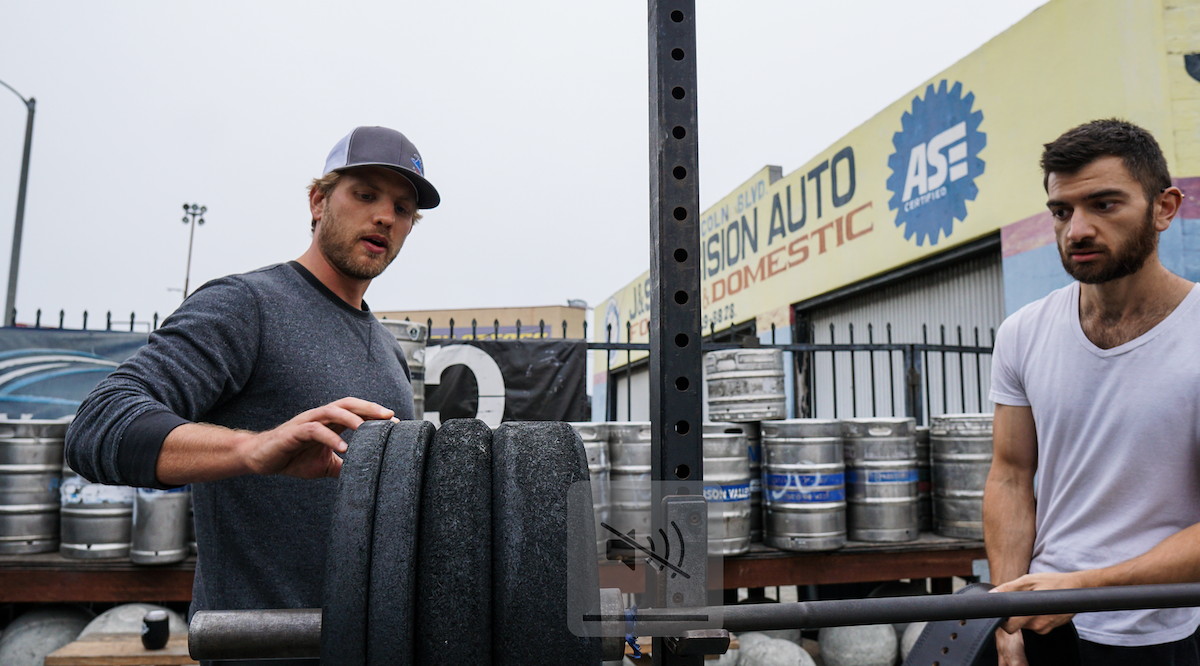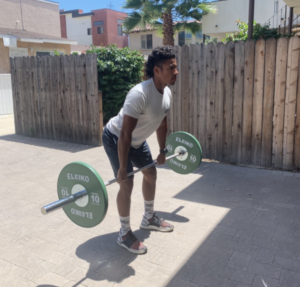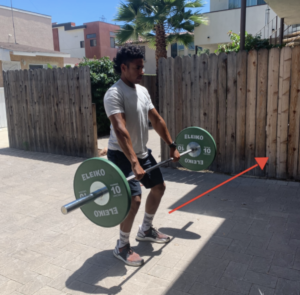
Weightlifting is a pillar of strength training that deserves a tremendous amount of attention for its high-skill, technical aspects. Aside from being the only barbell competition included in the Olympics, it is continually done in one form or another in gyms across the world. Simply, weightlifting is here to stay.
In my years coaching the lifts to beginners, one of the subtle faults I’ve seen is a distinct break in the bar path in the second pull of the clean. It looks like the athlete ‘bounces’ the bar off the quads as they look to generate force to drive the barbell vertically. The disadvantage becomes clear as the load increases. The ‘hitch-and-bump’ of the barbell leads to horizontal displacement of the barbell (which is always undesirable) and reaching, essentially a self-imposed lifting plateau. The faulty technique will stop you from increasing load, not your actual strength.
This hitch during the second pull has shown itself, off and on, across my years and it’s something that we have worked hard to resolve, especially if athletes have this movement pattern ingrained from years of insufficient coaching and correction.

The hitch occurs as the second pull begins, about this point of the lift.

The ‘trampoline bounce’ occurs as the athlete tries to artificially drive the bar vertically by bouncing the bar off the thighs but results in the barbell traveling away from the lifter.
There are three ways that I find beneficial when looking to correct this fault:
1.Back Strength
Looking at athletes who display this fault, I want to suggest that improved back strength can help address this issue. If an athlete has a weak back, they will be unable to keep the desired tension and position on the bar as they enter the second pull. Due to the inadequate strength, they compensate by trying to create a ‘trampoline bounce’ off their thighs. Two great exercises to build strength are clean deadlifts and hang clean pulls.
2.Barbell Awareness
Beginners in weightlifting who push the intensity too early in their development are common victims of this fault. A possible solution is coupling tempo eccentric clean deadlifts with power cleans. This will help raise barbell awareness in the lifter during the second pull.
3.Education
This fault can also be a simple lack of knowing. Lifter might not realize this fault is occurring and re-educating what the goal is during the second pull and what interaction between the barbell and the body could help immediately fix this fault. This is third for a reason. Most lifter’s know the goal of the second pull but simply have developed the bad habit of bouncing the bar off their thighs.
This fault is very common among lifters and as a coach we should continue to be vigilant during the early stages of any lifter’s development. The earlier we catch this fault (and ANY fault for that matter) the better their success in the long run.
8/12/20 WOD
DEUCE ATHLETICS GPP
[Meet at Anderson Park]
DEUCE BACKLOT GPP
[Meet at Pan Pacific Park]
DEUCE GARAGE GPP
Make 4 attempts of the following for load:
:10 Front Rack Barbell Walk Out
10-10-8-8
Front Squat
Then, complete 3 rounds for quality of:
8 Front Foot Elevated DB Split Squats – Left
8 Front Foot Elevated DB Split Squats – Right
10 Snatch Grip RDLs
Then, complete 8 rounds for reps of:
:20 Max Squats
-Rest :10-
Then, complete the following for quality:
60 Sliding Hamstring Curls

